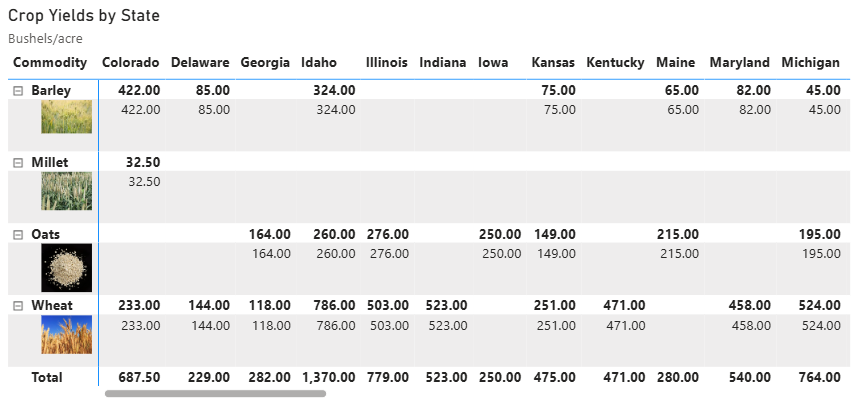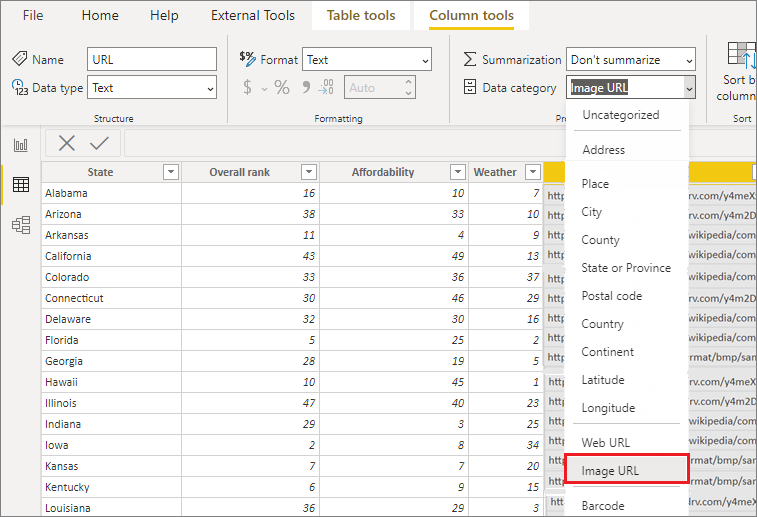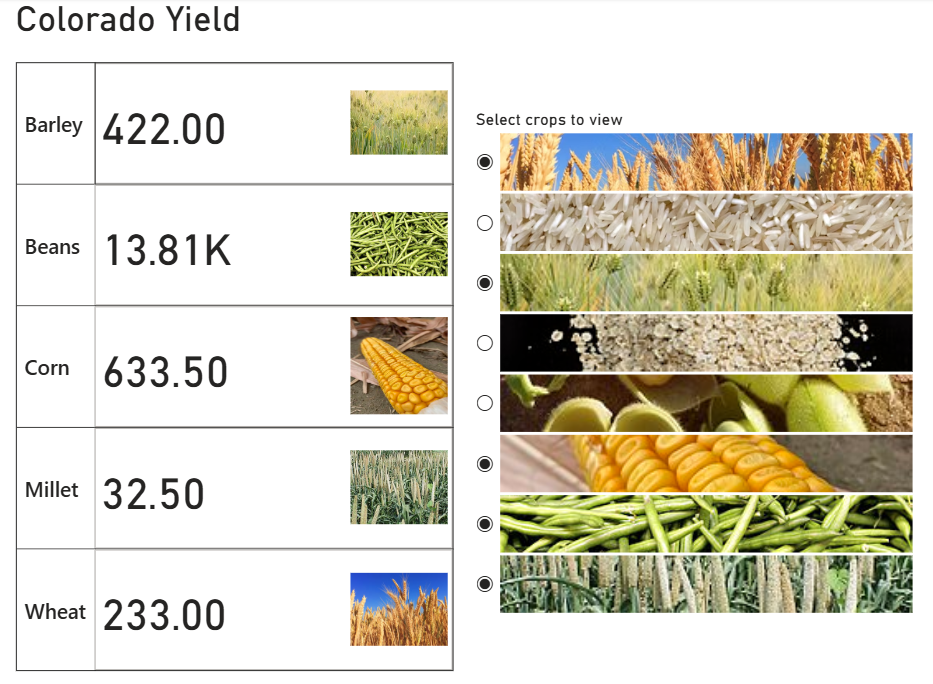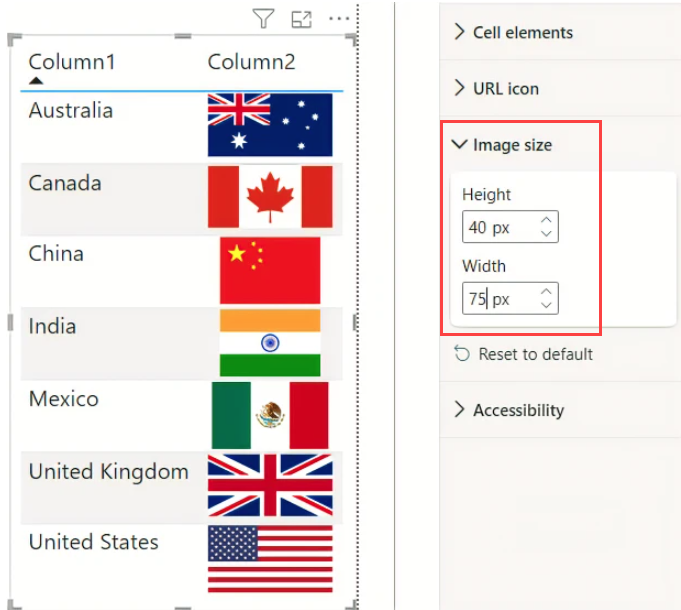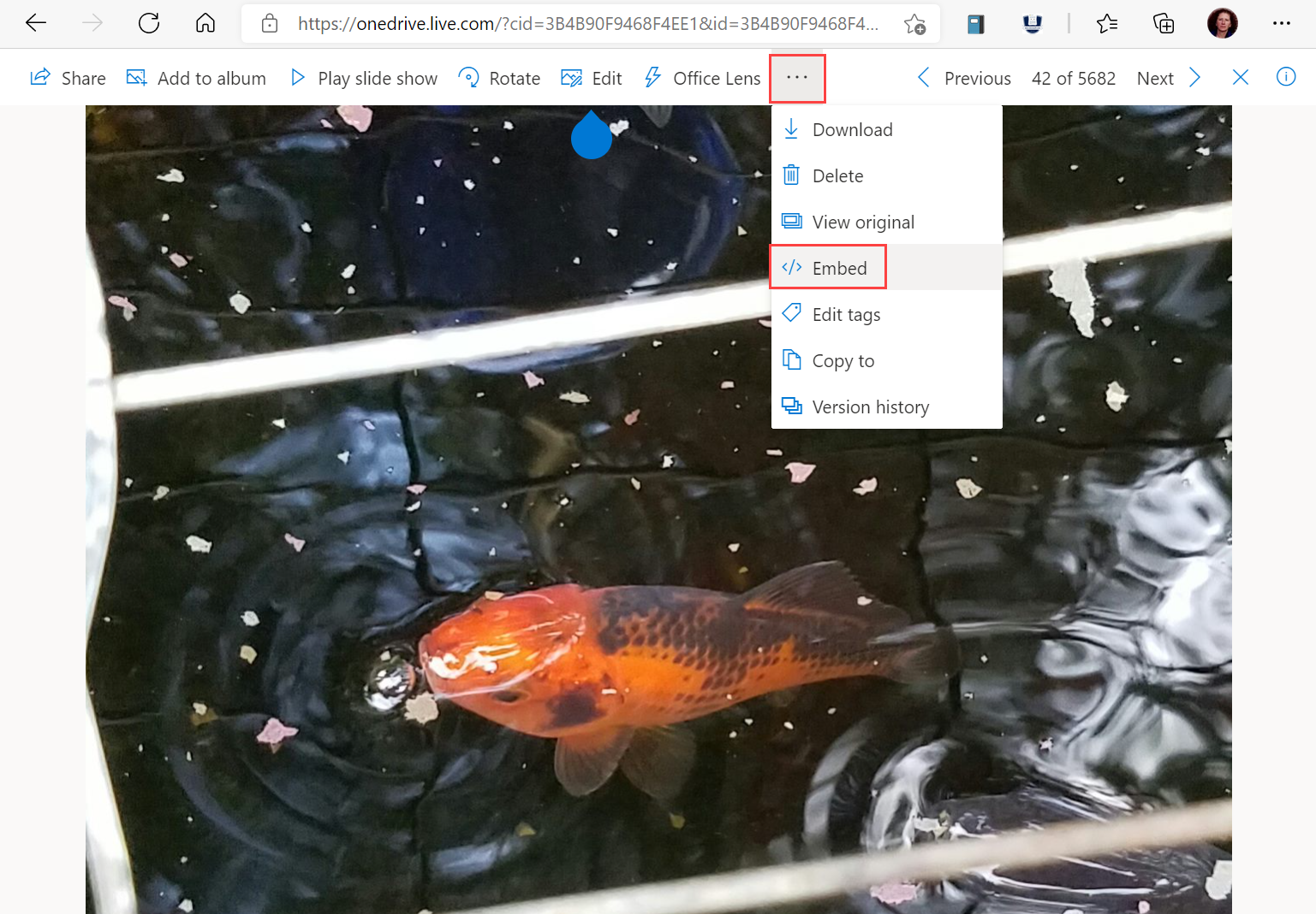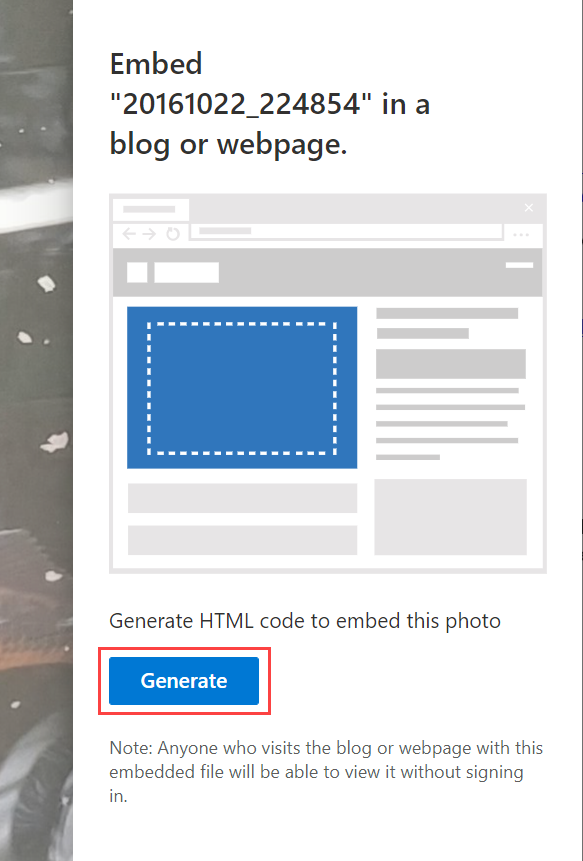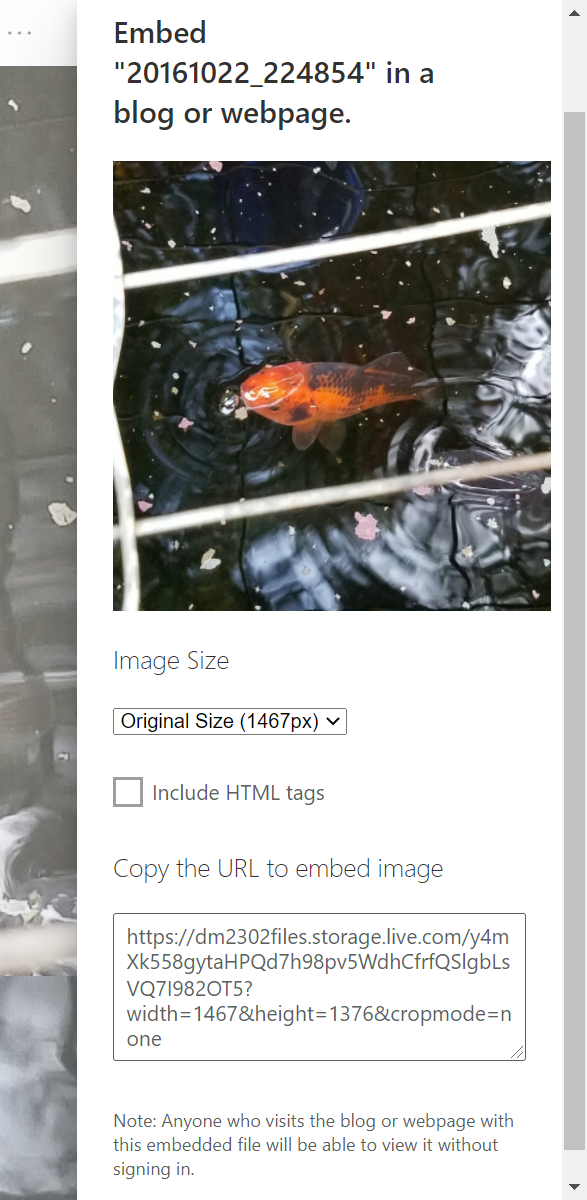Note
Access to this page requires authorization. You can try signing in or changing directories.
Access to this page requires authorization. You can try changing directories.
APPLIES TO:
Power BI Desktop
Power BI service
You can enhance your Power BI reports by adding images to them. Static images on the page are suitable for some purposes. However, sometimes you want dynamic images that relate to the data that's currently displayed in your report.
This article shows you how to display dynamic images in a table, matrix, slicer, or multi-row card.
Add images to your report
Create a column with the URLs of the images. For image requirements, see Considerations, later in this article.
In Table view, select that column. On the ribbon, go to the Column tools tab. Next to Data category, select Image URL.
Add the column to a table, matrix, slicer, or multi-row card.
Format the images
On the report canvas, select the visual that contains images.
On the Visualizations pane, select the paintbrush
 , and then go to the Visual tab.
, and then go to the Visual tab.Expand Image size, and then set the Height and Width values.
Add images from OneDrive for home
Images in your report need to be anonymously accessible.
Exceptions to this rule are images that are hosted on OneDrive for home. You can sometimes generate an embed code that points directly to a OneDrive for home image. The image can then appear in Power BI Desktop or the Power BI service, even though it isn't anonymous.
Power BI mobile apps don't support such images. For the Power BI mobile apps to be able to display an image, the image URL must be anonymously accessible.
On your OneDrive site, locate the image that you want to add to a report. Next to the image name, select More Actions
 , and then select Embed.
, and then select Embed.Select Generate.
Select Copy embed code, and then paste the URL in the Image URL column.
Considerations
- The image needs to be in one of these file formats: BMP, JPG, JPEG, GIF, PNG, or SVG.
- The URL must be anonymously accessible. It can't lead to a site that requires a sign-in, such as SharePoint or OneDrive for work or school.
- The Power BI mobile apps display the image only if the image URL is anonymously accessible. The image can't be hosted on a site that requires a sign-in, such as SharePoint, even if you can access the image in Power BI Desktop or in the service.
